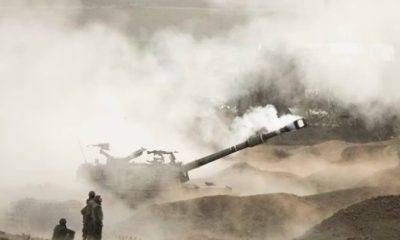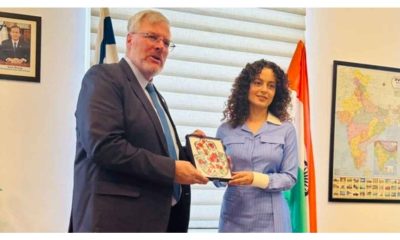Latest world news
Iran, Saudi Arabia tensions grow with Trump visit
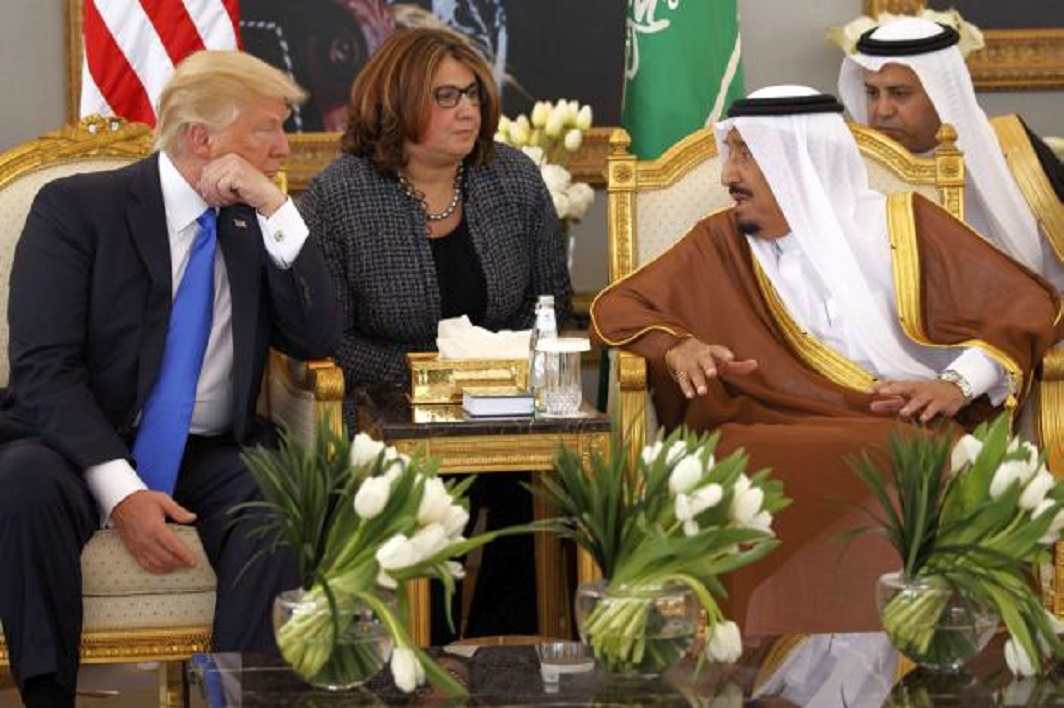
[vc_row][vc_column][vc_column_text]Tehran tells Trump to ask Riyadh for help in preventing another 9/11
By Abu Turab
West Asia seems to be on the road to confrontation on sectarian lines. The region has witnessed two major developments during last two days. US President Donald Trump’s visit to Saudi Arabia attracted world media attention where he emphasised to work together against terrorism by highlighting Iran’s “destabilizing role” in the region. But, just one day prior to Trump’s address to 55 Muslim heads of states in Riyadh, Hassan Rouhani, the re-elected President of Iran, clearly communicated that his country “does not want to accept any humiliation or threat”.
During his 34-minute, 3,416-word speech, Trump mentioned Iran 10 times, while describing the growing menace of terrorism in the region. Trump said, “No discussion of stamping out of this threat would be complete without mentioning the government that gives terrorists all three: safe harbor, financial backing and the social standing needed for recruitment. It is a regime that is responsible for so much instability in the region. I am speaking, of course, of Iran.”
He elaborated, “From Lebanon to Iraq to Yemen, Iran funds, arms and trains terrorists, militants and other extremist groups and spread destruction and chaos across the region. For decades, Iran has fueled the fires of sectarian conflict and terror.”
While describing recent US strikes against Syria, President Donald Trump said, “Among Iran’s most tragic and destabilizing interventions have been in Syria. Bolstered by Iran, (President) Assad has committed unspeakable crimes and the US has taken firm action in response to the use of banned chemical weapons by Assad regime- launching 59 tomahawk missiles at the Syrian air base from where that murderous attack originated.” Trump mentioned Saudi Arabia, the host of the summit, just nine times.
On May 20, Hassan Rouhani, while addressing the nation after being re-elected for another four years as President, sent a clear message to the outside world. He was quoted as saying, “Our nation wants to live in peace and friendship with the world but, in the meantime, does not want to accept any humiliation or threat.” He further asserted, “This is the most important message that our nation expects to be heard clearly by all governments, neighbors and, especially world powers.”
Without mentioning the names of regional monarchies, Rouhani said, “Our election announced to our neighbours and the region that the way of ensuring security in the region is strengthening democracy and respecting people’s votes, but not relying on foreign powers.”
Rouhani did not name Saudi Arabia or the United States throughout his speech.
Javad Zarif, Iran’s Foreign Minister, in an editorial published by London-based al-Araby al-Jadeed website, advised Trump to discuss how to avoid another September 11 terrorist attack with the Saudi hosts in his first official visit abroad.
He wrote “(Trump) must enter into dialogue with them about ways to prevent terrorists and Takfiris from continuing to fuel the fire in the region and repeating the likes of September 11 by their sponsors in Western countries.”
Most of the 19 terrorists who killed nearly 3,000 people in New York in 2001 were Saudi citizens and there have been repeated accusations that members of the Saudi monarchy were complicit in the attack.
Among the six Gulf Cooperation Council (GCC) states, Saudi Arabia and Oman are absolute monarchies, Qatar, Kuwait and Bahrain are constitutional monarchies while United Arab Emirates, composed of seven member states, is a federal monarchy. All are US allies.
Meanwhile, in another development, Sana’a, the capital of Yemen, witnessed a massive demonstration on Saturday against President’s Trump’s visit to Saudi Arabia. Martin Smith of Public Broadcasting Service (PBS), an American public broadcaster, reported that posters were marked with slogans “down with America, “down with Israel.”
Martin said, “There were a series of speakers of anti-American chants, anti-Saudi chants. They are particularly upset that President Trump arrived in Riyadh to sign a $ 110 billion arms deal. These arms will go to the Saudis, and they will use these arms in their war in Yemen. And the country’s been through two years of war, and the people feel broken.”
The American journalist quoted WHO estimates that the cholera epidemic will probably infect two to three lakh Yemenis. UNICEF says that 70 percent of Yemenis were in need of some kind of humanitarian assistance. Nineteen million people were in need of food.
On May 19, just a few hours prior to Trump’s arrival in Saudi Arabia, Yemen’s Ansarullah fighters, headed by Abdul Malik al-Houthi, and their allies in the army (headed by former President Saleh Abdullah) had reportedly fired Volcano 2, a long range ballistic missile at Riyadh. A statement by Yemeni army said that the missile strike conveyed “a clear and important message that we are all ready to the aggression”.
However, Saudi military announced that it had intercepted and destroyed a projectile some 200 km west of Riyadh, without giving more details.
Earlier on March 8, Ansarullah had claimed of launching a missile attack at King Salman Air Base in the vicinity of Riyadh.
According to Press TV, Yemenis are particularly angry at Washington for being complicit in the Saudi crimes against Yemeni nation by providing Saudi Arabia with conventional and banned weapons.
It would be reasonable to recall that after the US invasion of Iraq, Iranian influence has grown in the region. Tehran is the closest ally of Baghdad government headed by Shias, despite US pressure. It is considered to be playing important role in combating Daesh (IS) terrorists in Syria and Iraq. It had also influenced Hezbollah of Lebanon to help Assad regime in its fight against all terror groups. Saudi Arabia alleges that Iran was supporting Ansarullah in Yemen and opposition forces in Bahrain.[/vc_column_text][/vc_column][/vc_row]
Latest world news
World Earth Day 2024: Google Doodle showcases aerial view of planet’s natural beauty
Google celebrated Earth Day 2024 with a special doodle featuring an aerial view of our planet’s biodiversity.
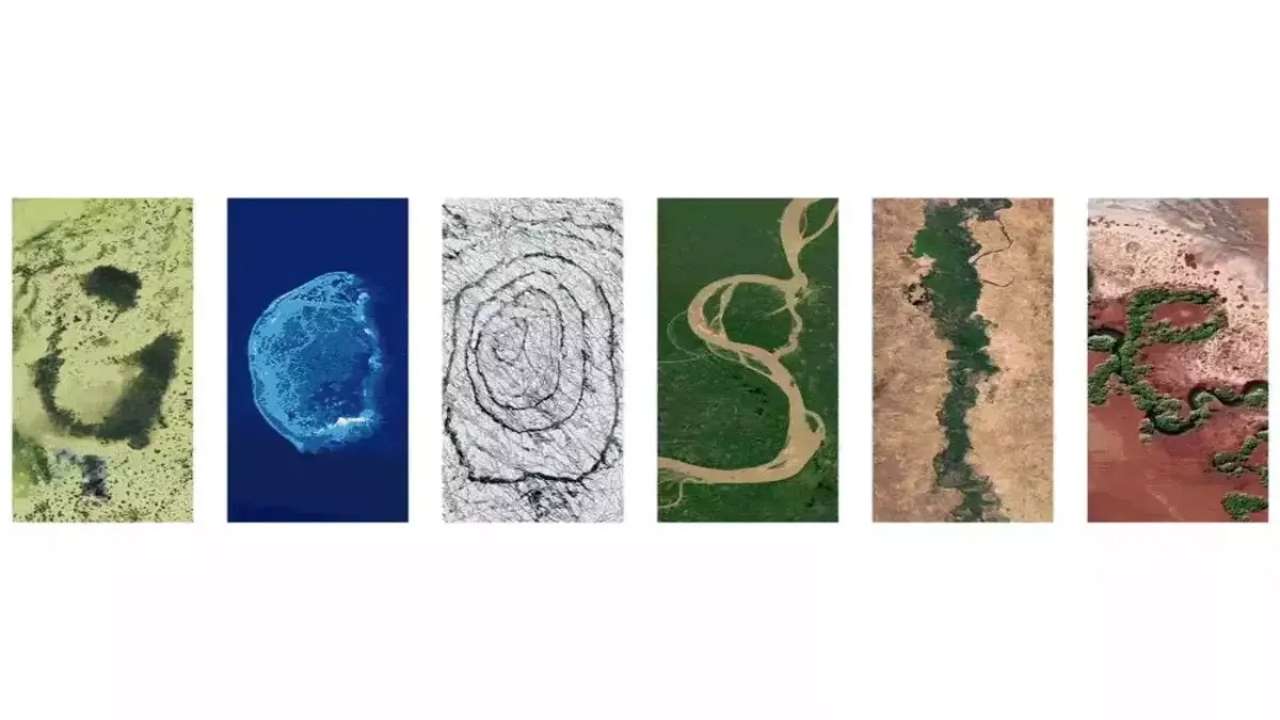
Google shared a doodle today to celebrate World Earth Day 2024, which showcased aerial photos of the planet’s biodiversity and natural beauty. Google reminded us of the importance of protecting planet earth for future generations with the help of this doodle.
The Google letters depict specific locations across the globe where people, communities, and governments work every day to help protect the planet’s natural beauty, biodiversity, and resources, according to the explanation of the annual Earth Day 2024 doodle on their website.
It said, these examples remind us that there’s much more to do to address the climate crisis and biodiversity loss, but also offer the promise of hope and optimism.
The islands of Turks and Caicos are represented by the letter “G.” The islands’ conservation efforts are concentrated on protecting important regions for biodiversity and addressing persistent environmental problems.
The largest reef in the southern Gulf of Mexico and a UNESCO biosphere reserve, Scorpion Reef National Park, is represented by the letter “O” in the Mexican flag.
The letter “O” features Iceland’s Vatnajokull National Park, which was designated as a national park in 2008 following decades of advocacy. The ecology within and surrounding the biggest glacier in Europe is safeguarded by this UNESCO World Heritage Site.
The letter “G” has the Jau National Park in Brazil on it. It is a UNESCO World Heritage Site and one of the biggest forest reserves in South America.
The Great Green Wall of Nigeria is represented by the letter “L,” and the Pilbara Islands Nature Reserves of Australia are represented by the letter “E.”
Meanwhile, Earth Day is a worldwide event that promotes protection of the environment every year. April 22 serves as a reminder of the importance of conservation efforts and sustainable practices to guarantee a healthier world and a brighter future.
The occasion inspires people across the world to come together and take action to protect the environment, strengthening our bonds with nature and promoting good change.
Latest world news
Bigg Boss 14 contestant Rahul Vaidya struggles walking in knee deep water, compares Dubai rains with Mumbai floods
Singer and TV personality Rahul Vaidya was recently stranded in the Dubai rains.
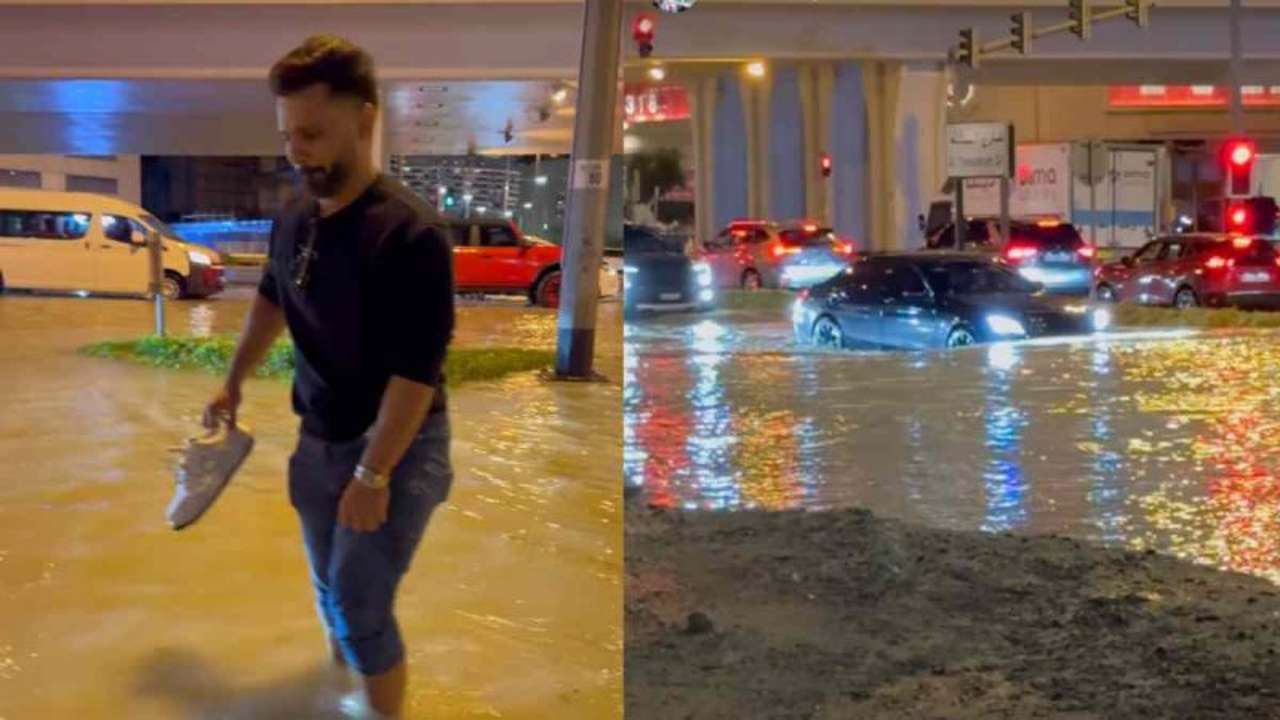
Rahul Vaidya, who was in Dubai ahead of his show which was scheduled to take place today, left the country due to heavy rains and reached Kolkata. The artist shared on social media his encounters in the UAE city, including challenges like walking through knee-deep water. Rahul provided an update regarding the heavy rainfall in Dubai on his Instagram profile.
The Bigg Boss 14 contestant revealed that he was in Kolkata and prepared to do an evening performance. Recalling the terrifying period he went through, Vaidya said there was a lot of confusion and panic in Dubai. The situation was similar to that when heavy floods hit Mumbai in 2005.
Vaiday also posted seval other images and videos of cars that were underwater and flooded roadways. The Bigg Boss 14 contestant, who shared his ordeal, claimed that even though it had just rained for two hours, the situation was dire.
In one of the video, which went viral he can be seen struggling in walking in knee-deep water. He can be also seen holding his sneakers in one hand and with other hand he was seen managing other things.
This is the result of the two hours of rain that it had, he can be heard saying in the video. Vidya also said he dosen’t believe Dubai is accustomed to a lot of rain. Everything had stopped working, he remarked.
After taking part in the first season of the singing reality show Indian Idol, Rahul Vaidya gained widespread recognition. In addition to Bigg Boss, he took part in Khatron Ke Khiladi 11.
Meanwhile, heavy rains that triggered flooding in the UAE and Bahrain, which left 18 people dead in Oman on Sunday and Monday, have paralyzed the financial hub of the Middle East, Dubai.
A lot of incoming flights were diverted from Dubai’s international airport because of the rain. At 7:26 p.m., the busiest airport in the world for foreign visitors stopped accepting new arrivals; a gradual resumption was announced for more than two hours later.
Images of planes navigating flooded tarmacs are making the rounds on social media.
According to pictures shared on social media, the flagship malls Dubai Mall and Mall of the Emirates both experienced heavy floods, while at least one Dubai Metro station had water up to the ankles.
There were several road collapses, severe flooding in residential areas, and numerous reports of leaks from windows, doors, and roofs.
Due to the unfavourable weather, schools around the United Arab Emirates were forced to close, and as more storms are predicted, the closures are anticipated to last until Wednesday. The government of Dubai allowed its staff to work remotely till this Wednesday.
Latest world news
Dubai sky turns green during storm in UAE, video goes viral
The UAE witnessed record-breaking rainfall on Tuesday and the National Centre of Meteorology recorded 254 mm of rainfall in less than 24 hrs in the Khatm Al Shakla area in Al Ain.
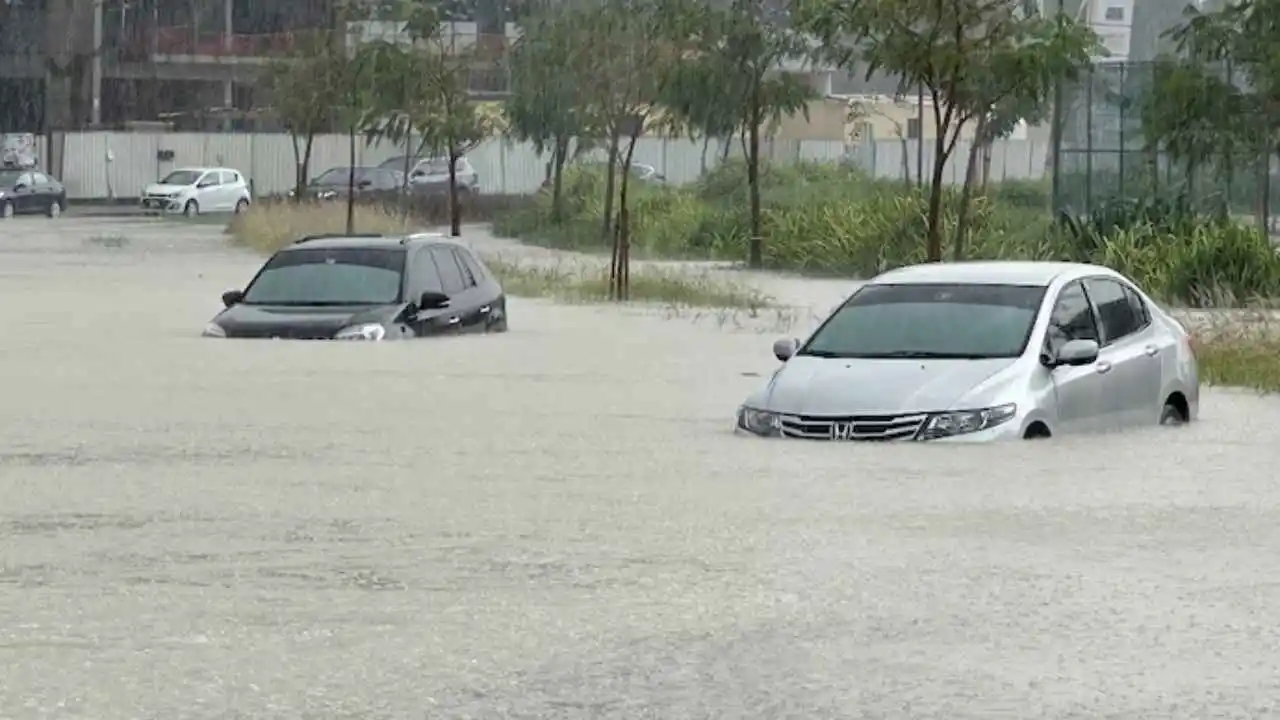
1 person was killed in UAE as it witnessed heavy rainfall on Tuesday, stranding commuters, flooding roads, disrupting trains and flights and resulting in water leakage from mall ceilings. The UAE witnessed record-breaking rainfall on Tuesday and the National Centre of Meteorology recorded 254 mm of rainfall in less than 24 hrs in the Khatm Al Shakla area in Al Ain. It is being said that the rainfall was the highest documented since the start of data collection in 1949.
The heavy rainfall in UAE came days after a similar situation in neighbouring Oman, where 13 people were killed in flash floods. Many parts of Oman saw torrential rains, which caused students to be trapped in buses and swept away motorists and trapped people in their homes.
Videos from Dubai circulating on social media showed widespread waterlogging on roads in Abu Dhabi, Dubai and other important cities. This left daily commuters in cars and other vehicles struggling to get back home. Dubai metro station too was seen flooded and closed.
One such video circulating on social media shows the aerial view of the city of Dubai from the top of a building. In the video the stormy winds are seen blowing over the city of Dubai. As the storm intensifies the Dubai sky turns green and ultimately gets covered by heavy rainfall. The video has gone viral on social media with more than 1.1 million views.
Another video showed water leakage from the ceilings of shopping malls, flooding the floors and destroying goods. A video which was shot in the famous Mall of the Emirates, showed pieces of ceiling falling as the rainwater gushed inside. Videos from many outlets of the Deira City Centre mall chain showed escalators being rendered unusable. Majid Al Futtaim, the company which owns the Mall of Emirates, said that the shopping complexes have been kept open and the customers are being sent away from the flooded areas.
-

 Cricket news20 hours ago
Cricket news20 hours agoIPL 2024: Yashasvi Jaiswal hits brilliant century to help Rajasthan Royals beat Mumbai Indians by 9 wickets
-

 2024 Lok Sabha Elections19 hours ago
2024 Lok Sabha Elections19 hours agoNCP (SP) leader Sharad Pawar says Prime Minister Narendra Modi is trying to create fear like Russian President Vladimir Putin
-

 Entertainment18 hours ago
Entertainment18 hours agoMithun Chakraborty, Usha Uthup honoured with Padma Bhushan
-

 Entertainment16 hours ago
Entertainment16 hours agoFan jumps on stage and hugs Atif Aslam during concert, video goes viral
-

 2024 Lok Sabha Elections18 hours ago
2024 Lok Sabha Elections18 hours agoPrime Minister Narendra Modi says listening to Hanuman Chalisa under Congress rule is a crime
-

 Entertainment14 hours ago
Entertainment14 hours agoManisha Koirala reveals reason for rejecting Dil To Pagal Hai, says regrets that decision
-
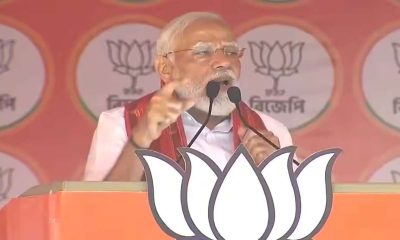
 2024 Lok Sabha Elections12 hours ago
2024 Lok Sabha Elections12 hours agoPM Modi says Congress leaders consider themselves above Lord Ram
-

 India News20 hours ago
India News20 hours agoArvind Kejriwal given insulin in Tihar jail after sugar levels touch 320









